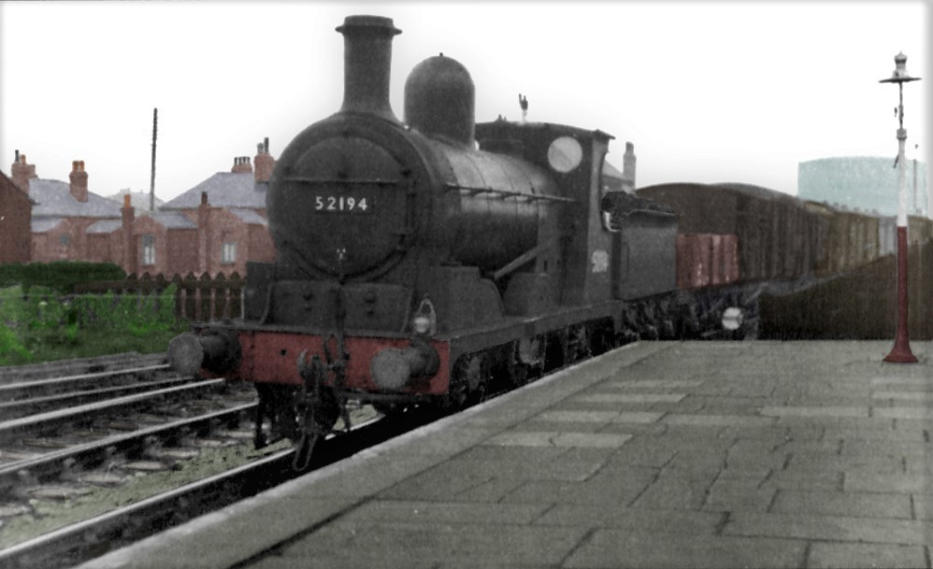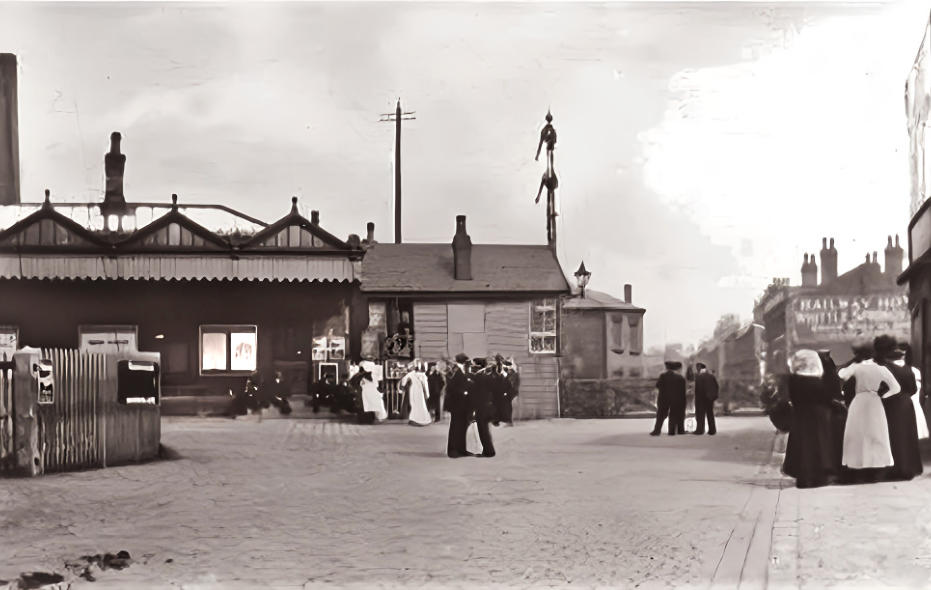
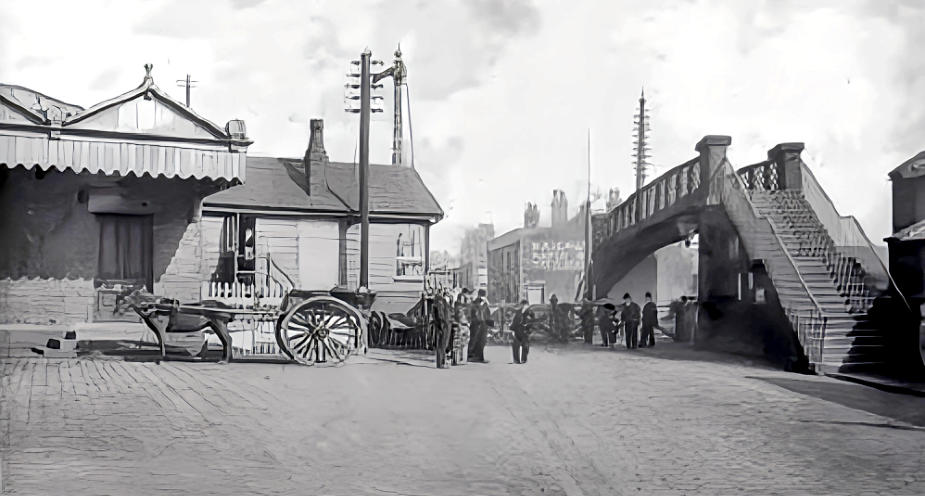
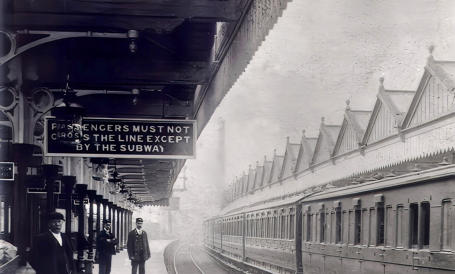
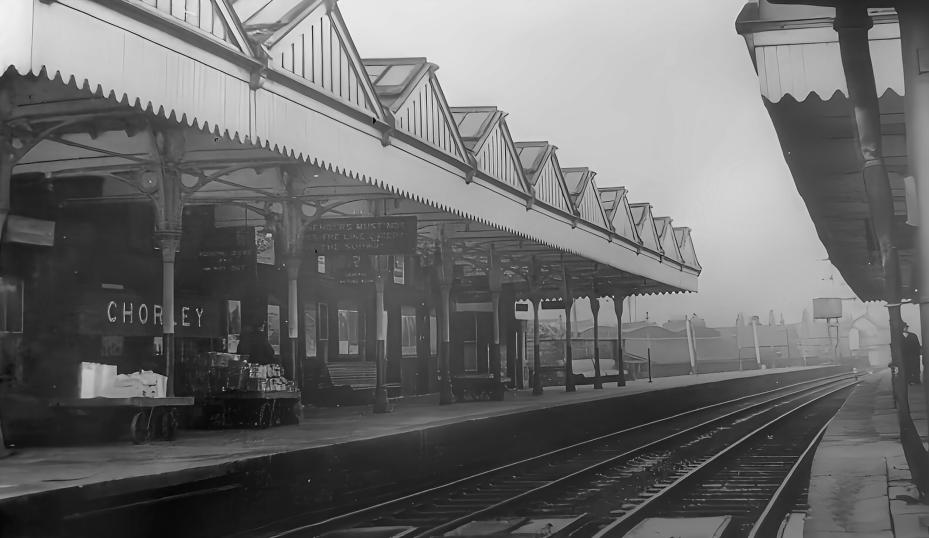
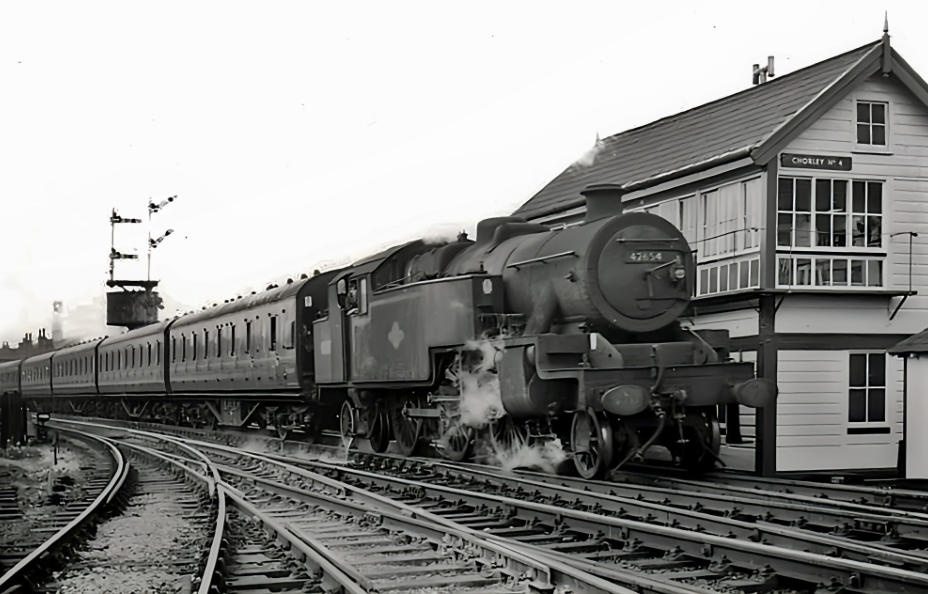
c1880s - much to note in this photo. The signals are lower quadrant. The station has a canopy on the outside of the station. The signal box is longer than the later
Chorley No 3 box, but most noticeable is the bridge. Passengers preferred to risk crossing the line than use the bridge
In 1891 the bridge had been removed and a subway constructed to replace it. That dates this in the 1890s. The Railway at the other side of the level crossing still has the
same advert on the gable end. A busy station by the looks of it. Note the horse muck - lower left corner, which was the norm in those days
c1906 The carriages look similar to the 1906 photo taken at Heapey. Note the
distorted writing on the sign above the porters, caused by refraction from the
glass of the large gas lights. Also note the splendid canopy on the Bolton
platform. In the distance was the Council owned “destruction” chimney on the side
of Stump Lane bridge. Tony Bonney recalls “the council took away all the rubbish
(including all the pets that were gassed along side). The furnace was housed in
the building on the left just before the bridge, it was pulled down by hand because
it was so close to the Preston line (almost on the line) not sure but I think that it
was the tallest one in Chorley, I cannot think of any that were taller.”
c1930 The Blackburn platform is beyond the two benches on the Preston platform.
Ex LYR 0-6-0 No 52194 coming off the Blackburn line, pulls a goods train into
Chorley in September 1952. A little under 3 years later in August 1955 this
engine was withdrawn. See below for colourised version
(© FW Shuttleworth)
1966 - A freight train pulls away from what is now the front of Chorley Station.
The forlorn Blackburn bay platform stands empty. (© Tom Morris)
Built in Derby in 1941 No. 42654 pulls away from Chorley and passing No4 signal box. The track on the left is the start of the Chorley to Blackburn line.
The first and second coaches are on Brunswick Street bridge
Harpers Lane bridge above the Preston line around 1900. The bridge beyond,
“Cephos Bridge”, carried the Blackburn line. Cephos powder was advertised as a
remedy for headaches, colds and ‘for the nerves’. It contained caffeine and
aspirin. Caffeine is a stimulant and aspirin is a painkiller. Each packet contained
nine folded paper sachets of powder to be dissolved in water. Cephos powder
was, appropriately, manufactured in Blackburn by The Cephos Company. It was
available over the counter at chemists.
(Photo © Lancashire County Council)
1960s - The Cephos advert has gone, a Ribble bus, probably the 254 to Blackburn
trundles up Harpers Lane. Note the Robertsons jam advert on the left side of the
bridge and the then popular Player’s No6 advert on the right.
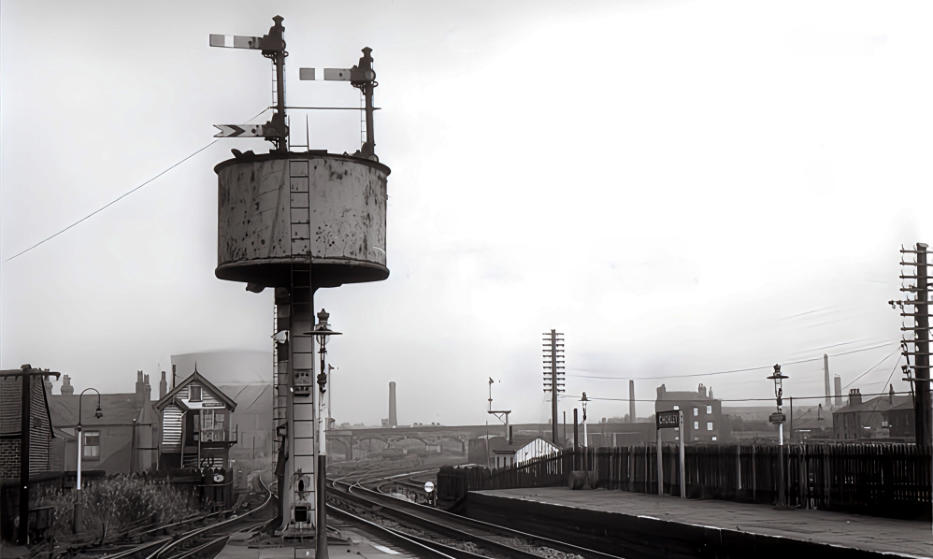
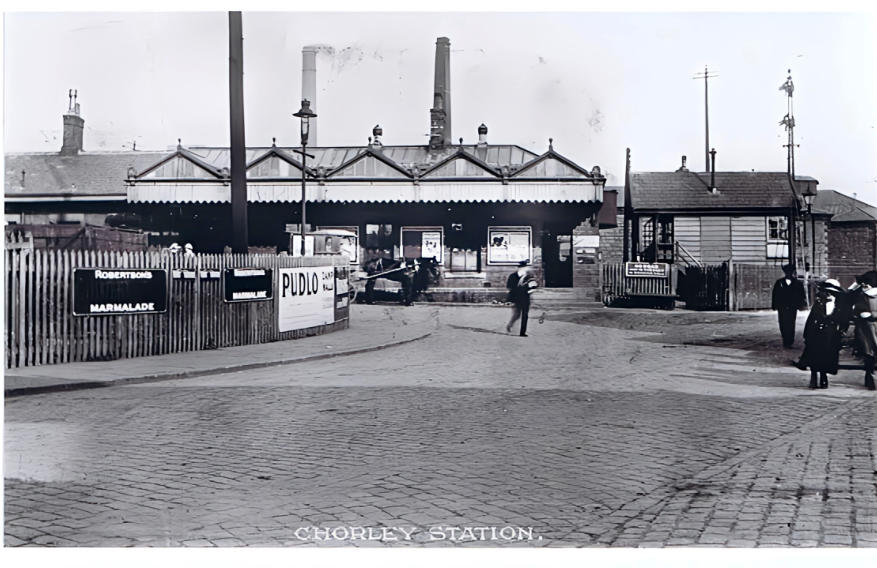
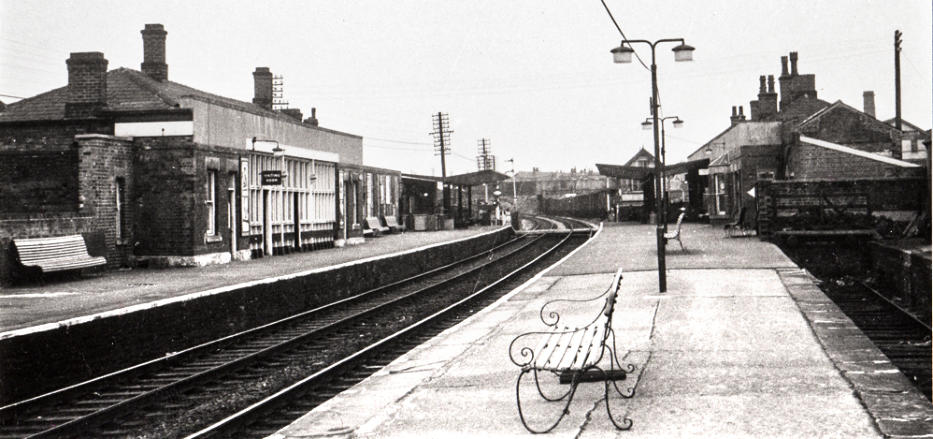
This is the the view of Chorley Station looking south. To the right of the platform is the disused Blackburn siding. Also, beyond the signal box are goods wagons in
the goods yard on Railway Street
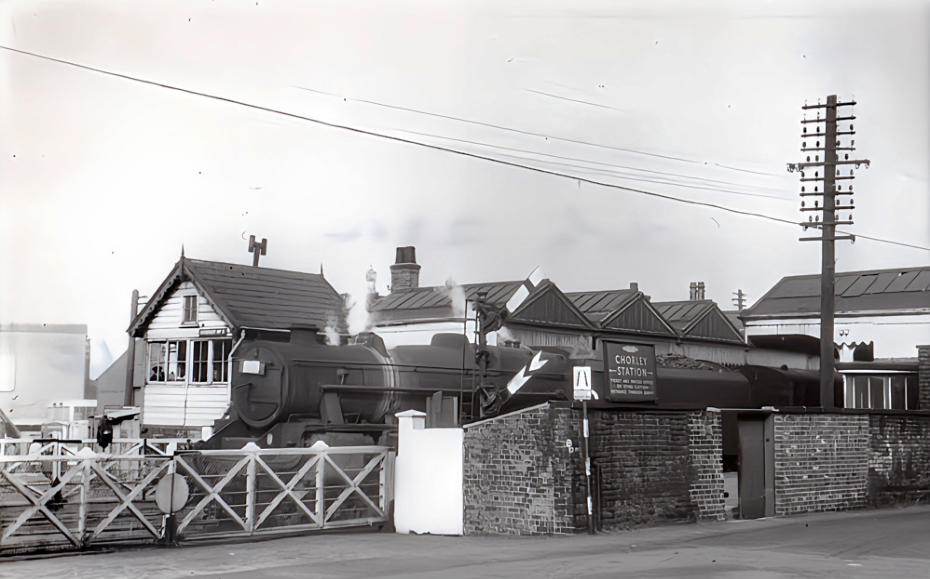
Photo by HC Casserley
(© RM Casserley)
22nd September 1962 A rare view of the station from Steeley Lane. Mr HC Casserley’s records tell us this is the 9.15am Blackpool to Manchester
train being pulled by 44732 - a Stanier “Black five”. Note also the BR direction sign to the station and the nice “old style” road narrows sign.
Click the photo’s to enlarge them
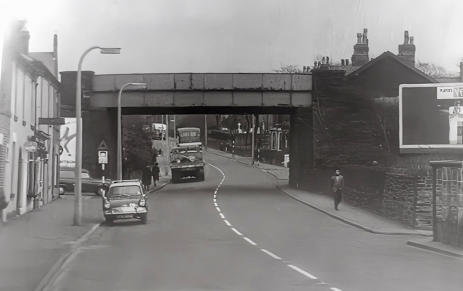
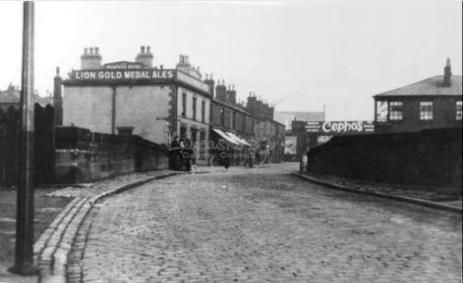
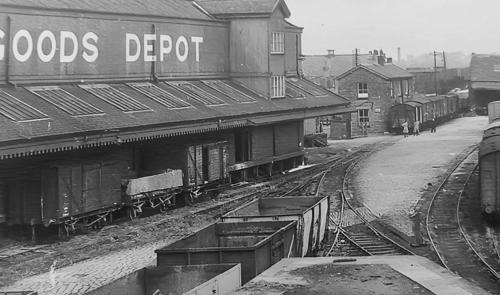
Right: Chorley Goods Depot on Railway Street. The platform at the
foot of the photo may have been the original Chorley Station as it
was sited here before moving to its present location. This was never
the goods depot for the Blackburn Chorley line, that was located
south of Stump Lane bridge

In December of 1841 the Bolton and Preston Railway had reached Chorley from Bolton and on the 22 December 1841 Chorley Station opened. It was located south of
today’s station and was where the old Goods yard was on Railway Street. For a time Chorley was a terminus until the line to Preston was complete. The Bolton and
Preston Railway was soon taken over by the powerful Lancashire and Yorkshire Railway and in 1863 a new station was built on the
site of the present station which was a couple of hundred yards north of the original station. Within 6 years Chorley was serving the
LYR and the new Lancashire Union Railway for, on the 1st December 1869 the LUR opened their line to Blackburn from St. Helens.
The line from St Helens joined the LYR line at Adlington, shared the LYR line to Chorley where it branched off to Heapey and
beyond. As a result of this new railway, Chorley became quite a large railway town, nothing on the scale of Horwich or Preston, but
larger than many towns.
Goods The LYR already had their not insignificant sized goods warehouse and sidings south of the station and there were a
further ten sidings in front of the station. In fact, one line ran through the LYR Goods yard, then turned and headed of to Albion St
and formed three sidings of a company called Union Railway Waggon Works. In the 1860s and 1870s there were two other busy
works in Chorley constructing railway wagons for the expanding railways. The largest was the Union Railway Wagon Works. In
1873 it was producing 35 wagons a week. It occupied a large site from Albion Street to Railway Street. A company called Baxendale
and Healey in Steeley Lane produced 25 large coal trucks a week and Simon Leach also in Steeley Lane produced up to 10 wagons
a week. By 1890 only the Union Railway Wagon Works remained. *
The Lancashire Union Railway tracks to Blackburn left the Preston line immediately north of Brunswick Street Bridge and it was
between here and Stump Lane where the LUR built an engine shed (between the Preston line and the Blackburn line) several
sidings and their Goods warehouse, which is still there and still in use (not railway use) to the east of Friday Street near Stump Lane
(Grid Ref 587178). To the north of Stump Lane was one further siding off the Blackburn tracks, a long one, between the two main
lines.
The gradients at both ends of the line often necessitated the use of a banking engine to help the heavy freight trains up the incline,
hence the necessity of the engine shed in those early days. In fact Tony Bonney who lived on Thornhill when the line was open,
remembers well the goods trains, one in particular. He recalls, ”All the families that lived on Thornhill will remember the goods train
that went from Chorley to Blackburn about 4.30am, going up the steep bank just before the arches. It would make such a racket
when the wheels slipped causing the engine to over race, and yes it woke every one up, That is why they all had large families, to
soon to get up but to late to back to sleep.”
Passengers The passenger services on the LUR line either ran between Wigan and Blackburn or Chorley and Blackburn. Through
services from Wigan would use Platform 2, ie today’s Preston bound platform. Chorley to Blackburn trains used Platform 3 which
was a bay platform to the left Platform 2. The line was also used in the late 1920s as part of a direct service between Blackburn and
London. Trains leaving Chorley for Blackburn would cross the Preston - Bolton rails and veer onto the LUR line opposite Chorley
No4 signal box. Passing the engine shed on the left and passing below Stump Lane, the train would begin the long drag behind
Beaconsfield Terrace, passing Thornhill and then crossing the 9 arch viaduct before eventually pulling into Heapey Station. Chorley
was well used and during Wakes weeks and other holidays the platforms would be crowded, especially the Blackpool one. There
were also plenty of excursions and chartered rains too.
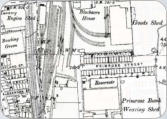
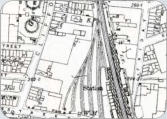
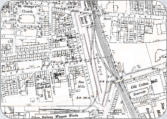
Click the maps to enlarge
Taken from a slightly different angle to the earlier photo’s, it reveals the water tower at the end of the Bolton platform (which I haven’t seen in any other photo’s).
There’s a horse and carriage in front of the station.
Over the years the station has changed and is not recognisable from the station of the 1940s. Gone are the elaborate canopies that covered most passengers in wet weather,
replaced in the 1970’s with small inferior metal covers. Gone too are all the sidings, the goods yards, the signal boxes. It is now a station devoid of character. A plus though is
that it is still a manned station, a living station, a station with increasing passenger numbers year on year, now approaching 0.8 million a year. It may have been a million if the
Blackburn line was open today.
The future The line (and station) has excellent prospects. Electrification has commenced and journey times will be improved, and passenger numbers will continue to
increase.
Click to enlarge

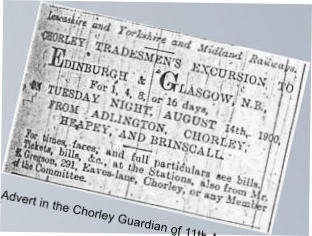
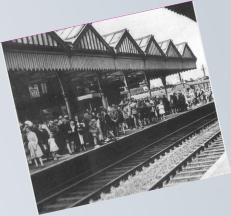
Looking north towards Stump Lane bridge. The Chorley - Blackburn line can be seen veering off to the right. The chimney in the centre belonged to
Whitters Water Street factory.
© www.white-coppice.co.uk 2022
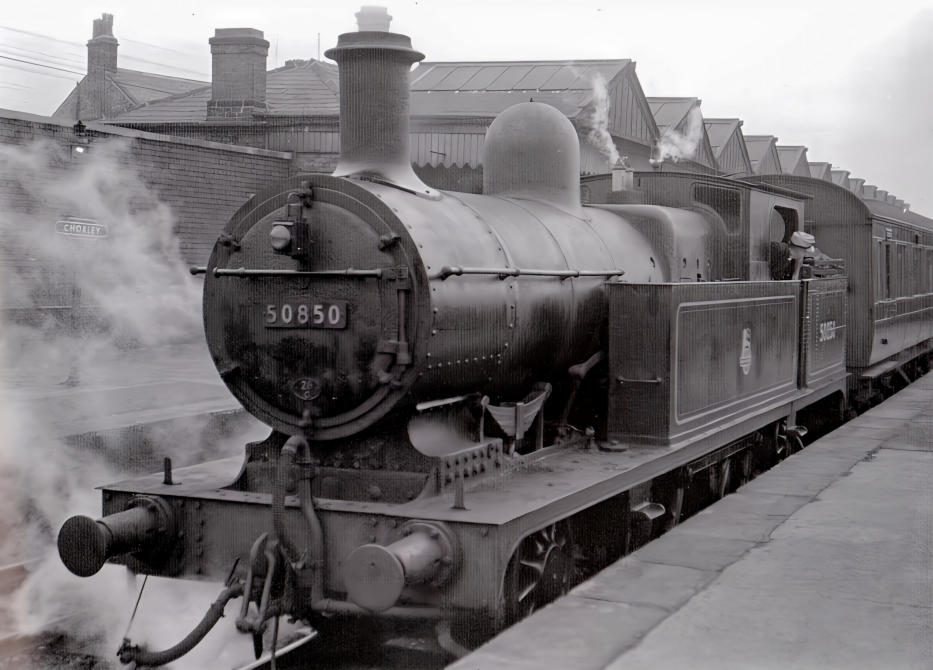
50850 - an old Aspinall Lancashire and Yorkshire 2-4-2T awaits departure from Chorley with a Blackburn train on 2/1/1960. This engine built in 1899 and rebuilt in 1911 was the
last of its class to be withdrawn by British Railways in 1961
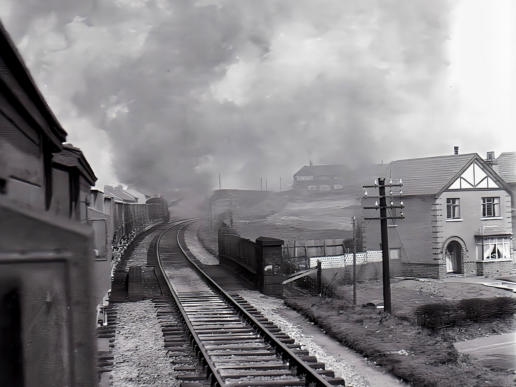
This photo, taken from the guards van, shows this freight train
crossing Harpers Lane bridge. The engine is already working hard as
it starts the climb to the summit at Brinscall
Click the photo to enlarge it
(© John Morris - used with permission)
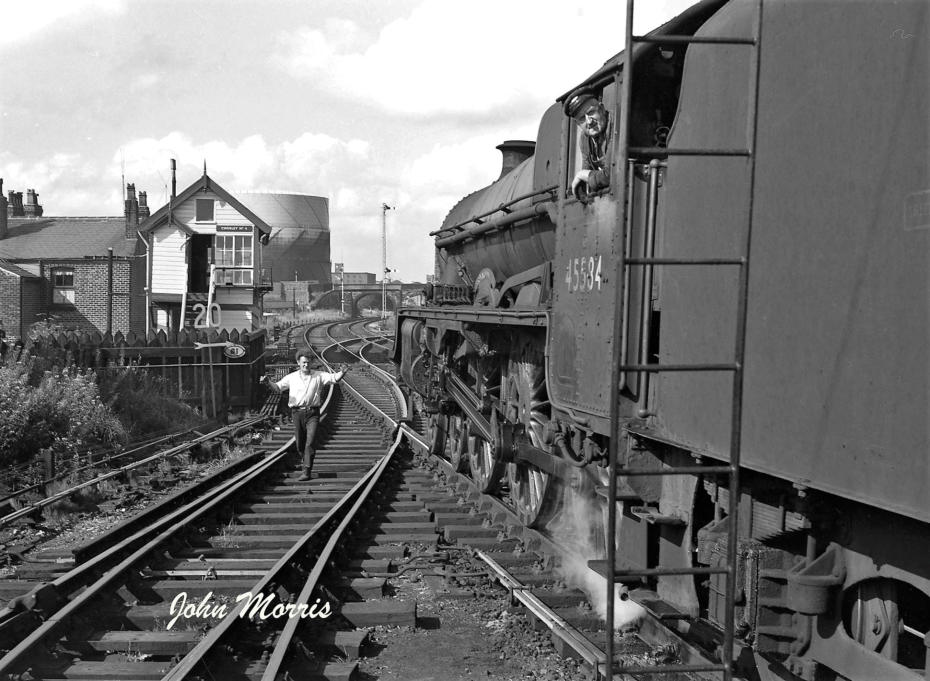
Below: The signalman wants the attention of Jubilee 45584 North West
Frontier’s driver as it stands at the water tower at Chorley Station,
(probably in 1964 as it was based at Blackpool between May and August
of that year). The engine was withdrawn in September 1964 and cut up in
January 1965
The track where the signalman is standing led to the old Blackburn
platform; the points in front of the engine forking off to the right took trains
onto the Blackburn line.







CHORLEY
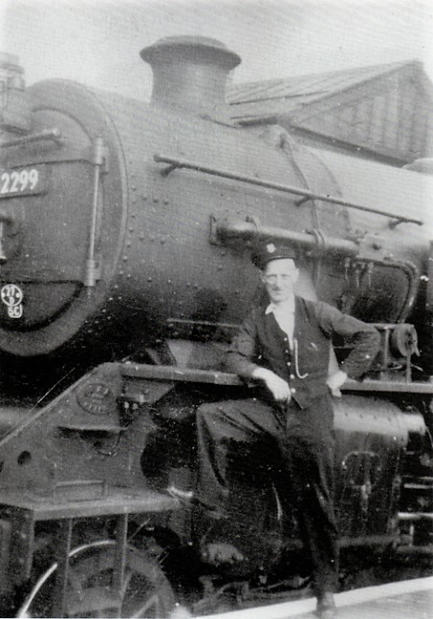
Above c1960 Well known to Chorley travellers including myself, who as a
schoolboy travelled to Preston in the early 1970s was Bob Mason. Here he is
posing in front of 42299, a Fairburn 2-6-4 engine. It was built in 1947, withdrawn
on 20/3/1965 and cut up 31/7/1965
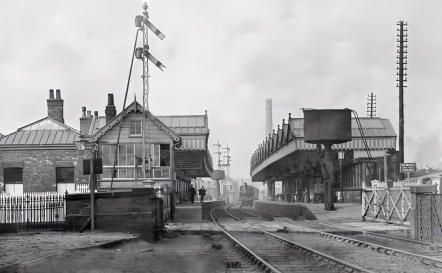
Possibly taken at the same time as the photo the right, with the train in the
distance pulling the coaches in the next photo.
Click either of the two photos below to enlarge
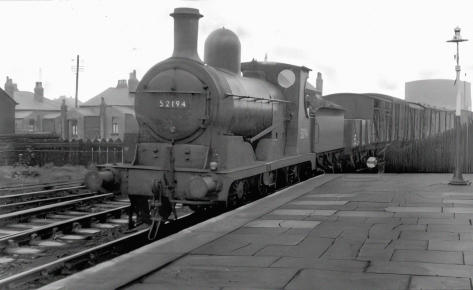

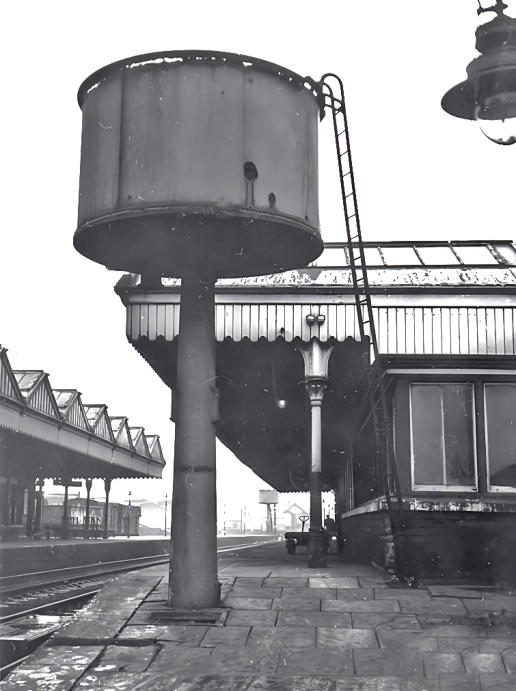
A forlorn and worn out water tower on the Bolton bound
platform (and about to be taken down).
